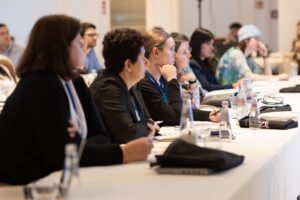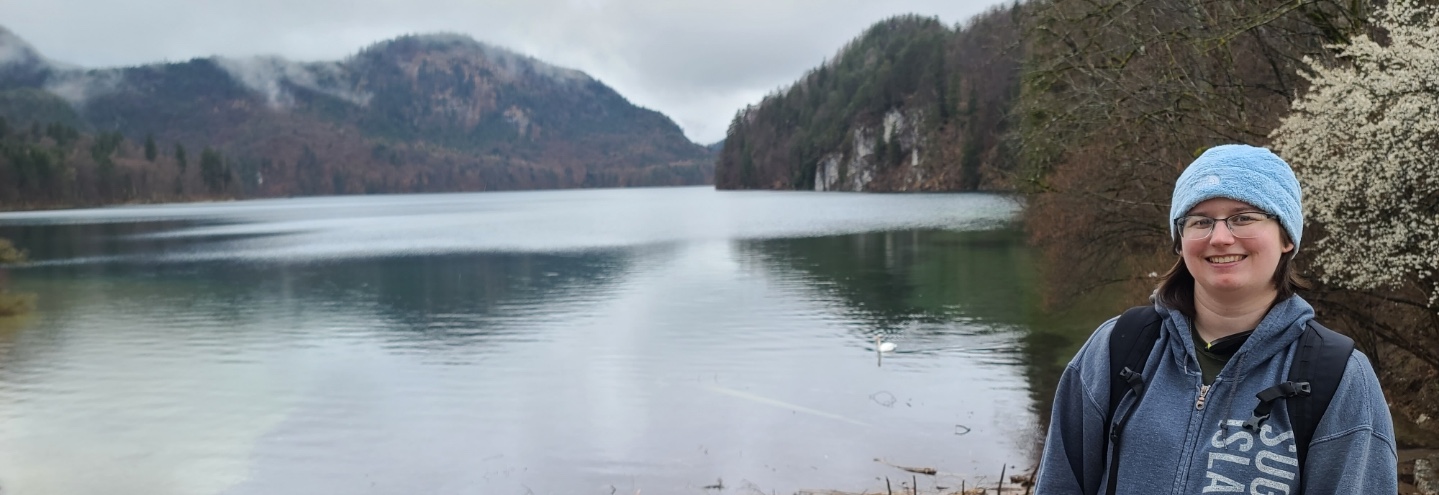Going Euro for Biocompatibility
ASG’s focus on learning sent Cassidy Creemer to Munich for the latest regulatory insights
Curiosity is one of the core tenets of ASG’s One Team culture. The company encourages team members’ desire to learn and grow by supporting learning opportunities and creating forums where they can share their knowledge.
In March, ASG Polymer Scientist Cassidy Creemer’s curiosity about biocompatibility inspired her to fly to Munich to attend the Biocompatibility Testing in Medical Devices Conference.
Curious to know what Cassidy learned? Find out in this Q&A.
Why did ASG send you to the biocompatibility conference?
Doug asked me if I wanted to travel, and I was interested to learn more about biocompatibility. I was also excited to see the world and network with other people in my field. I had never been to Germany before.
Tell us about your experience in Germany.
I stayed in Munich, near the conference. It was my first time traveling internationally since the pandemic. A lot of people spoke English, which was great because I don’t speak any other languages. Munich has an amazing public transportation system. It’s fun to walk around and hear every accent — French in one conversation and German in another.
Tell us about the conference.
We had a myriad of speakers that would come up one after another, which was awesome. I took notes even though the conference was recorded because it helped me fight off jet lag. I relearned some things I already knew and got exposed to a lot of new information, too. The conference focused on the regulatory landscape, especially in the European Union, but the FDA came up quite a bit as well.

What are some things you learned?
One of the most interesting things I learned about was the biocompatibility evaluation plan. The plan is a living document that aims to save time and money and demonstrate the scientific thinking behind a device. One of the main points of the conference was how to develop a biocompatibility plan that is efficient and covers all bases.
I learned a lot of European regulations and nomenclature. For example, in the EU a notified body is an organization designated by an EU country to assess the conformity of certain products before they enter the market. The notified bodies are often made up of consultants who update and change International Organization for Standardization guidelines.
One set of standards, ISO 10993-1, evaluates the biocompatibility of medical devices to manage biological risk. It specifically looks at how the device interacts with the body and gives a general principle on the evaluation of medical devices and how to categorize them. At the conference, ISO 10993-1 came up a lot.
Who were some of your favorite speakers?
I found Heidi Naderi and Richard Tully’s presentation on the quality and regulatory landscape of ISO 10993 really engaging. Another highlight was Rose-Marie Jenvert’s presentation on new approach methodologies for safety assessment in medical devices. And Marco Costante’s session on how to assess and conclude on the safety of nanoparticles released by medical devices, along with his workshop, stood out as a favorite among the talks.
How do these learnings tie into your work at ASG?
As a polymer scientist, I specialize in biocompatibility and materials. Now that ASG is expanding into Europe, it’s important that we learn the European regulations. Learning about biocompatibility from well-known scientists from around the world gives me a fresh perspective on the work I’m doing now and the work I’ll be doing in the future.

How will what you learned benefit clients?
Biocompatibility is an important process in medical devices. It’s important to keep in mind that the best plans are ones that take biocompatibility into account early.
At ASG, we help clients by making sure they cover all the bases when it comes to the regulatory side of things. Regulations can change quickly, and ASG makes sure devices are compliant with current regulations.
At the conference, they shared an example of a company developing a device. Initially, the company didn’t understand or ignored the importance of biocompatibility. But once they brought in the proper consultants, they realized the issues with biocompatibility and regulations. This caused the company to delay a market release for months and possibly years.
This kind of example shows why our expertise in biocompatibility and regulations make ASG so valuable to our clients.
How does your experience reflect ASG’s value of curiosity?
Curiosity is the reason I went to the conference. I saw an opportunity to learn about European regulations and biocompatibility as a whole, so I took it. I’m glad ASG gave me the opportunity, and I’m glad that the other people on our team are as curious as I am.
Want to learn more about ASG’s culture? Check out our values page to learn more.
Conference image at top right courtesy of VNA International






